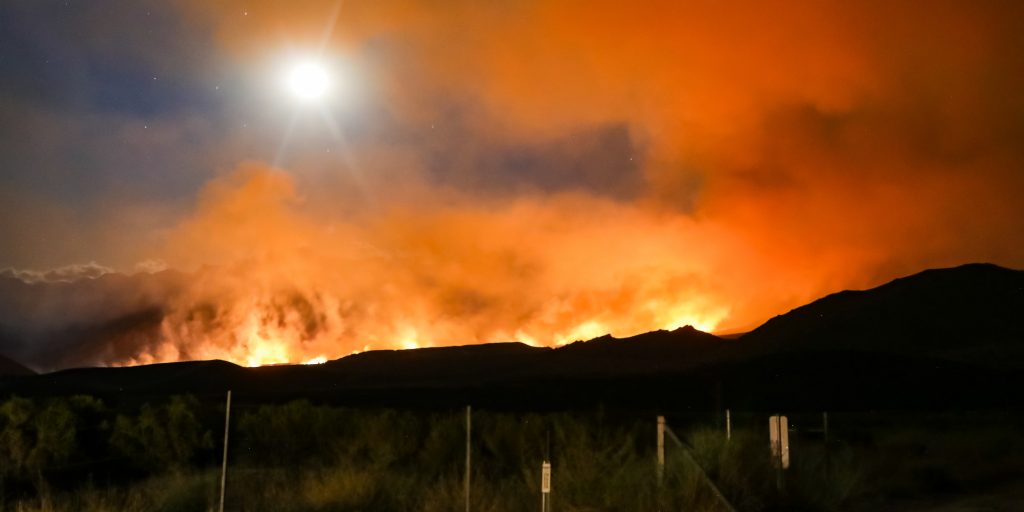Smart city technology drives efficient disaster response and recovery
From heatwave-induced wildfires in the West to unrelenting hurricanes in the Southeast, natural disasters are increasing in frequency and severity due to climate change. As evidenced in 2020’s historic year of extreme cases, totaling 22 separate billion-dollar weather and climate disasters, we can expect this trend to continue. Today, wildfire season is longer and more severe than any other time in our nation’s history, in addition to hurricanes generating more destructive power. As storm severity grows over time, how city and state governments prepare, respond and recover is critical for building communities back to better than they were before the disaster struck.
Building in more resilient infrastructure and technologies, such as smart sensors and advanced utility metering analytics, has never been more critical as areas of the country battle the whirlwind of challenges that may arise without proper planning. Municipalities cannot prepare enough for these inevitable events. By investing now in smart technologies, city leaders can better predict, prepare and respond to these disasters as they arise.
Gaining visibility into system performance with IoT
Deploying active grid technology ensures connected cities, assets and people’s safety while encouraging continuous innovation. Additionally, utilities and municipalities are empowered to effectively mitigate risk to improve safety, flexibility and efficiency, while predicting unforeseen issues relative to the natural disaster and smart grid performance.
Active grid technology is powered by IoT (Internet of Things) infrastructure, correlated sensors data and distributed intelligence to help city leaders and utilities identify and act on public safety threats of natural disasters. IoT sensors measure and report problems immediately, in addition to identifying the root cause. Installing these sensors, such as pole tilt, electric distribution lines and water level, enables data measurement across various areas. As a result, cities and utilities can reduce damage and improve the visibility of systems and response efficiency to ensure safety and recovery.
Municipalities can make better decisions in the face of a natural disaster by harnessing the power of data insights. For example, depending on its severity, wildfire smoke can travel hundreds of miles, as we witnessed in 2020’s wildfiresaffecting California, Oregon and Washington. Dense wildfire smoke produced hazardous air quality that affected millions of people for weeks. To ensure the safety of residents within the area of impact and surrounding regions, air quality sensors provide data representing the level of pollution in a specific location rather than taking a macro view of an entire area. This integration can help utilities understand the critical areas and instruct affected areas to remain indoors until air quality improves.
Gathering 24/7 data-driven insights for efficient response and recovery
Real-time information and digital transformation empower city leaders to obtain immediate ROI. Without access to this information, it is an impossible task for managers to monitor system performance around the clock while predicting and reacting to safety hazards.
Networking technologies automate communication to smart grid elements, connecting all devices and switching or rerouting power remotely. Automatically, all devices in the field can coordinate with one another to identify specific locations at fault. The integration removes the need for crews to drive-by city areas to physically identify faults. Instead, it enables quick, efficient adjustments in real-time. In addition, enhanced monitoring provides cities and utilities with a better idea of where the damage is to prepare for managing it.
Predictive analytics helps to detect issues 24/7 and drive outcomes following the emergency. For example, predictive insights can help cities improve their vegetation assessments to identify potential risks if a tree branch meets an electrical distribution wire. During a wildfire, sensors identify vegetation near the wires for crews to address before it becomes a problem, potentially igniting a fire close to resident homes.
Decentralizing capabilities with DI and edge intelligence
Distributed Intelligence (DI) is another consideration for extending concepts beyond the meter with IoT and edge intelligence. Bringing significant support to the smart grid, DI enables decision-making on the spot and sending alerts of the most critical information in real-time. Since DI does not stream data anymore, the solution places less stress on the communication network.
Rather than having a centralized system that handles all controls, using edge intelligence enables a decentralized utility-run microgrid. This is essential if a system’s connection is severed as edge devices are autonomous and act as the first line of defense. For example, critical organizations like hospitals need to have sufficient power during a hurricane. If one area of a city uses a lot of that required power, DI and edge sensors and control devices can immediately reduce the load and transfer power to where it is needed.
Overall, the capabilities of meters to disconnect loads enables better rotational load and infrastructure performance. This flexibility is also helpful during power blackouts, such as the snowstorms that impacted Texas earlier this year.
Driving long-term results and innovation with smart city technologies
As natural disasters worsen over time, ensuring public safety has become a top priority of city governments worldwide. To address this need, cities are investing in smart technology to deliver critical infrastructure and services before, during and after the storm, empowering governments and utilities to collaborate and solve real problems by identifying threats quickly and ensuring a rapid response for mitigating risk.
With access to these technologies, cities, municipalities and utilities can build a stable foundation for future events while driving substantial value for their communities. However, without setting up disaster response and recovery plans, outages can become more significant and costly in addition to risking reliability, safety and voltage issues on the smart grid. As cities seek solutions and technologies to further improve their services and safety in the face of a natural disaster, smart city technology will only increase in importance and provide future-proof, continuous innovation.
Matthew Smith is a senior director of grid management at Itron Inc. Smith has more than 30 years of entrepreneurial experience in the energy, home computer and consumer electronics industries. At Itron, he sets the global business and product strategy for the grid management line-of-business.




















